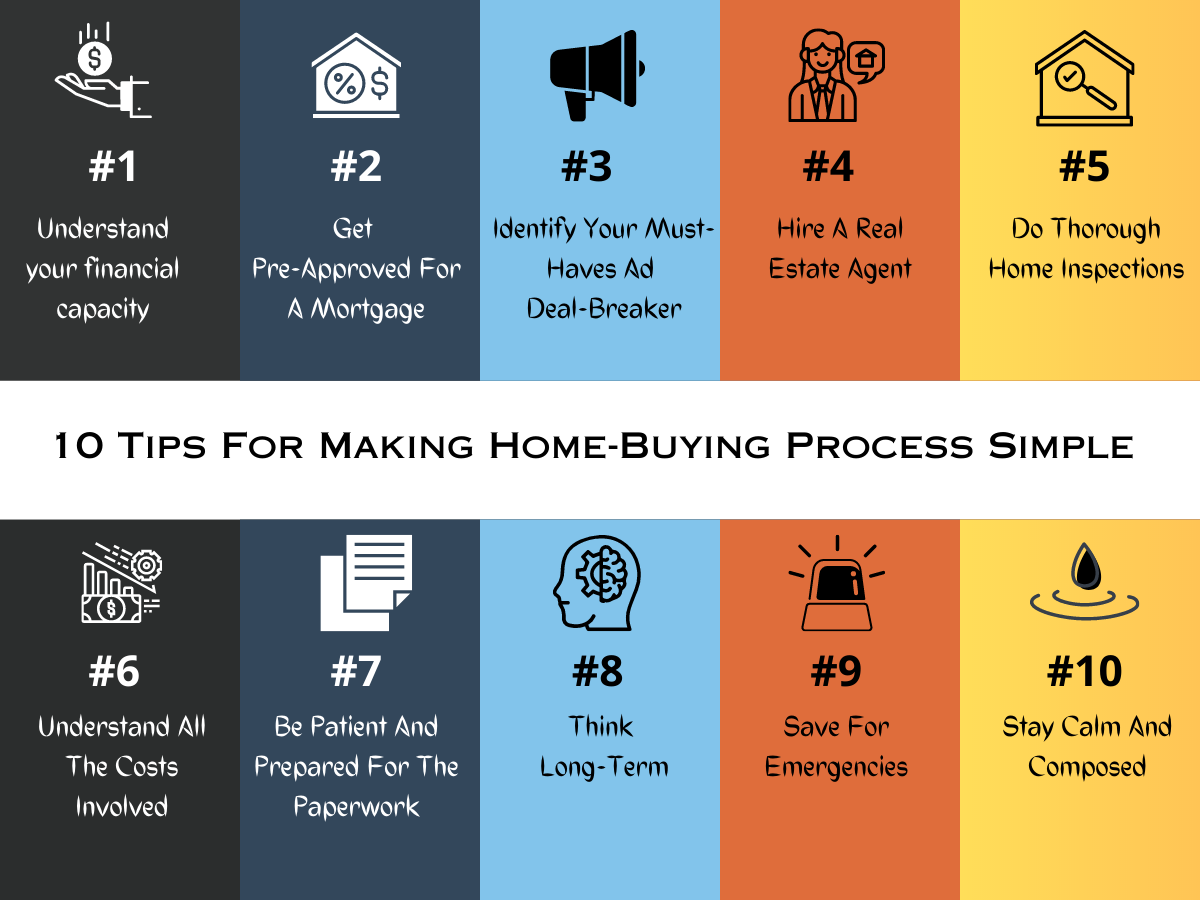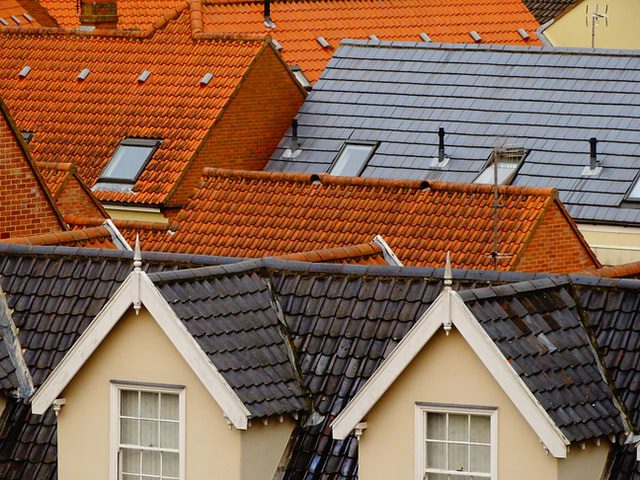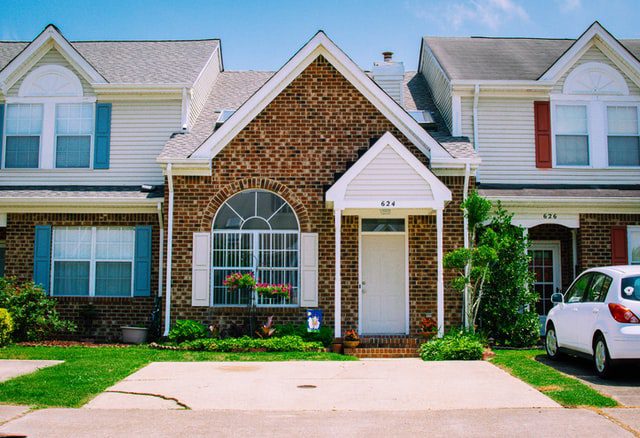Are you looking for simple and easy tips for making home-buying process simple ? Purchasing a house can be one of the most exhilarating experiences in life, but it can also be one of the most daunting. With myriad factors to consider and numerous steps to navigate, the home-buying process can sometimes feel overwhelming. Yet, it doesn't have to be that way.
In this article, we'll provide ten (10) helpful tips designed to simplify the home-buying process, enabling you to navigate your way to your dream home confidently. Whether you are a first-time buyer or an experienced homeowner looking for a change, these practical pointers will streamline your path to homeownership. Let’s start!

Before embarking on the home-buying journey, evaluating your financial standing is crucial. This involves assessing your income, current expenses, debts, and savings to determine how much you can reasonably afford to spend on a new home.
Remember, the general rule is that your monthly mortgage payment should not exceed 28% of your gross monthly income. By setting a realistic budget upfront, you avoid the risk of financial strain or overcommitment down the line.
Securing a mortgage pre-approval before you start your home search is a strategic move. This process involves a lender evaluating your financial health to determine how much they will lend you. A pre-approval provides a more concrete idea of your price range, helping you focus your search on homes within your budget.
More than that, it serves as a testament to sellers that you are a serious buyer with the financial backing to follow through on your offer. This can be particularly advantageous in a competitive market where multiple offers are common. It's crucial, however, to remember that pre-approval is not a guaranteed loan.
It is conditional on your financial circumstances remaining consistent and the property you ultimately select meeting the lender's requirements, including a sufficient appraisal value. As such, it's advisable to maintain your financial stability throughout the home-buying process to ensure a successful final loan approval.
It's crucial to be clear about what you're seeking in a prospective home. Before embarking on your house hunt, create a list of must-haves—features that are non-negotiable—and deal-breakers that would deter you from purchasing a property.
This could range from the size of the home, its location, how close it is to amenities or work, the safety of the neighborhood, to the quality of the local school district. This list will serve as a guide to narrow down options and keep your search focused. However, maintain some flexibility.
Finding a property that meets all your criteria may be difficult, and a degree of compromise can open up more potential homes without sacrificing your most important needs.
Working with a skilled real estate agent can greatly ease the home-buying journey. These professionals bring a wealth of knowledge about the housing market, and their experience in sourcing suitable properties and handling negotiations can be invaluable.
An agent can help you navigate the myriad steps involved in buying a home, from initial browsing to making an offer and closing the deal. They can also provide useful insights about potential areas and properties based on your preferences.

When selecting a real estate agent, ensure they understand your requirements and priorities and that they are someone you can trust and feel comfortable with. A strong, collaborative relationship with your agent will contribute significantly to a smoother, more successful home-buying experience.
A comprehensive home inspection is a must. This step uncovers any hidden issues, such as structural defects or outdated systems, that could become costly problems. Engaging a professional inspector can save you from unexpected headaches and expenses.
In some cases, identified problems could be deal-breakers, enabling you to make an informed decision about whether or not to proceed with the purchase. Remember, hiring a professional inspector pales in comparison to the potential costs of unforeseen repairs or renovations. Consider it an investment in your peace of mind and the longevity of your potential new home.
When you buy a home, the financial commitment certainly doesn't stop at the purchase price. There are many additional costs that buyers sometimes overlook in their initial calculations. These include fees for home inspections, which are vital to ensure the home doesn't have hidden issues, and closing costs, which can include loan origination fees, title insurance, and more.
It's essential to have a plan in place for saving money for a house to cover these various expenses. Additionally, you'll need to account for the expenses associated with moving into your new home. Finally, immediate repairs or renovations may be required to make the house fit your living standards. These could range from minor cosmetic upgrades to significant overhauls of key systems like plumbing or electrical.
Understanding and accounting for these costs upfront can help you set a realistic budget and ensure that you're financially prepared for the true cost of homeownership.
Here’s a more comprehensive guide on this topic: How much are closing costs in Alabama?
The home-buying process involves considerable paperwork, spanning from the initial offer to the closing documents. Ensure you comprehend each document before signing, and don't hesitate to seek clarification on any points of confusion. Patience and diligence are key during this stage.
In this paperwork-heavy process, don't be afraid to ask questions if something isn't clear to you. A trusted real estate agent or a real estate attorney can prove invaluable in explaining the sometimes complex language found in these documents. They can help you understand the fine print so you know what you're signing.
Remember, when it comes to your future home and such a significant financial investment, there are no silly questions. Patience, diligence, and a desire to understand can help you navigate the paperwork seamlessly and make a well-informed purchase decision.
Homeownership is a considerable long-term investment beyond just providing a place to live. It significantly impacts your financial status and lifestyle. It requires thinking ahead, considering your current needs and future possibilities.
Consider your life a decade from now. Plans for family expansion or potential relocations for work could influence the type of home you need. Even lifestyle changes like adopting sustainability practices, could dictate your home choice.
In essence, homeownership should be viewed as a long-term commitment aligned with future plans. This approach ensures a suitable choice that accommodates both your current situation and future changes, making it a rewarding investment.
Embracing homeownership also means preparing for unexpected costs that inevitably come with maintaining a property. These could be immediate needs, like repairs to a leaking roof, replacing a faulty appliance, or regular maintenance activities such as servicing the HVAC system or repainting the exteriors.
These costs can add up quickly and are often unpredictable. That's why it's prudent to establish an emergency fund specifically for your home. This fund should be separate from your regular savings or checking account, providing a financial safety net for unforeseen home-related expenses.
By setting aside a small amount each month into this fund, you'll have the peace of mind of knowing you're prepared to tackle any home maintenance or repair challenges that come your way.
Home-buying can be a lengthy and sometimes stressful process. However, keeping calm and maintaining a composed mindset can make the journey more manageable. Remember, patience, preparedness, and informed decision-making are the cornerstones of a successful home-buying experience.
These ten tips we've shared are designed to shed light on key aspects of the home-buying process, helping to equip you with the knowledge and confidence you need to navigate the journey successfully. From understanding your financial position to doing a thorough research and surrounding yourself with the right team of professionals, each step is crucial in making the process as simple and stress-free as possible.
Remember, buying a home is not just a financial commitment, it's a personal journey and a major life milestone. Following these tips will prepare you to make informed decisions and pave the way to your dream home. Happy house hunting!
Figuring out how to choose roof color for a brick house can be a difficult decision. It takes a lot of time and effort to decide which colors will look good together, but the overall appearance of your home depends a lot on the roof.
When you observe your roof's shingles, you may not see that your roof's tiling is made up of so many different color tones. Making sure you choose one or two of those undertones from your roof's current condition, is vital to blending your roof with your exterior paint color.
The roof also depends on your home's architectural style and many other factors ranging from energy efficiency to neighbor happiness.
Choosing the wrong roof color can be a costly mistake that you will probably have to live with or spend a lot of money repainting.
This article will reveal everything you need to know when choosing the roof color for a brick house.
At this point, you may be wondering why your roof color really matters so much. If you keep the water out of your home, isn't that enough? Well not really, although this is very important of course, the color also matters.
Next, we will explore one of the major aspects that will contribute to your decision on How to Choose a Roof Color for a Brick House?
Key Fact: Your roof is referred to as one of the most important fixtures on your home's exterior because it's a permanent fixture. It's detrimental to consider your roof's color and undertones when choosing your color scheme.
The color of your roof affects your home's internal temperature as it is exposed to direct sunlight and therefore potentially becomes a big heat absorber to your house.
So, the color you choose for your roof can alter the temperature in your home by several degrees.
However, light-colored roofs, keep cooler and are suited to warmer climates. This may mean energy costs could be reduced for cooling your home or building.
While darker roofs in your brick home will absorb heat and could increase cooling costs in the summer. Adequate ventilation will help with this, but color plays a role.

Figuring out what roof color is the most suited to your house style is not as easy as you may think. You need to answer the following questions before deciding on the color to choose.
If you can answer these questions, it will equip you with the right information on how to choose roof color for a brick house instead of doing some guesswork or picking a color randomly.
No law says your roof tiling must blend with the brick's color or your house trim. But obviously, it won't look as appealing as it should if you are not careful when coordinating your chosen colors. Ultimately, if you go on to sell your property, it can affect the rate and value of the home, if not properly matched.
As the owner of the house, beautifying a home is to allow you to increase its value.
You can sell your home after beautifying it to Veritas Buyers, they are the leading real estate investors in Huntsville, you can always reach out to them anytime.
The style of your home is very important for choosing a roof color for a brick house. For example, some home styles would not look appealing with a metal roof and may benefit from traditional shingles to compliment the house design.
Houses constructed in a standard architectural style will normally look best with a classic color palette.
Farmhouse styles always look best with a black roof or dark brown color. Your decision will usually be determined by the trim's color, pillars, and doors.
Bear in mind: These points are just guidelines that can help you form a rounded decision on your roof color to create a nice-looking exterior, but they are not set rules so feel free to explore different color schemes and styles.

Multicolored bricks cause a lot of confusion when homeowners are choosing their preferred type of brick.
You must be conscious that all roof bricks/tiles have an original base color, although the overall look of the brick appears to be multi-colored. This is often called the dominant color.
Choosing your brick color is important, however, it is not the only factor that should be considered in your choice of color. If only the brick's color is considered, the final look of your roof may not be ideal.
Your color palette will be influenced by the design of your house, the type of finish on your roof, as well as what's trending.
Dominant colors hold their hue despite its surrounding, so no matter what other colors you mix or pair with a dominant color, the color will always remain slightly visible.
This type of color will always push through and be easily seen in whatever design you choose, which explains why some colors tend to show up vibrantly while others are quick to fade.
Primary colors are the most dominant because they cannot be created by joining other colors together, like red, yellow, and blue.
If you are planning on changing or repairing your roof because of damage, and you have no other plans to replace anything else or repaint any part of the house, then you should look for the exact trim colors in your home.
Not everybody desires to have a fashionable house or to stick with the latest trends, but each era brings different popular colors.
Usually, the trends from a particular period tend to stick around and there are set colors that are used frequently.
Tip: Picking out neutral colors like tan, buff, white, and grey are great colors for roofing.
Your home's location has a vital impact when it comes to finding the answer to how to choose roof color for a brick house.
The geographical location and condition of our climate play a significant role in figuring out the color. Simply this is because certain environmental factors such as cold or hot weather, make a difference to your indoor temperature depending on the color you chose.
For instance, if you reside in a hot, humid climate that attracts heavy downpours of rain, you should go for a darker shingle that blends well with the brick type and may even help to hide black streaks.
Shingles contain a chemical that can help to prevent algae formation and streaking. However, that does not mean that algae and streaking won't eventually occur as the roof gets older and outdoor elements cause wear and tear.
Remember: When picking darker-colored shingles, they will absorb more heat. Therefore, in summer periods you may rely on your air conditioning facilities which may increase your bills.

All bricks have a base color, and all the other colors on the brick are based on the original base color. When put together, they add a level of depth and detail to your overall homely look. There are six fused colors seen on each brick.
Although the brick is multicolored, the base color must be recognized and considered before choosing the coating and the color of the shingle.
Most base colors are considered to be neutral colors and can be combined with almost any other color. Out of the six fused colors, two of the color cast options are not neutral and will need to carefully match them.
It's the most common color cast, but it is currently losing its popularity. The red brick color scheme is not complex nor easy to match it is somewhere in the middle. Matching this color with the items you already have in your home could be an easier way to help you pick a color.
Black and brown color casts are very versatile tints. You can make a very dark shingle or a light shingle and keep your home coordinated and beautiful without having to worry too much about color options. This brick color will probably be more important to match the shingle with it, as anything can go with these colors.
You may think that you haven't seen a pink house, but they are extremely common. These are the houses that, from the street, look almost a salmon-type color but it is a pink brick mold. The color schemes that look best with this brick color would be those in the grey family. Nothing too dark and nothing too light.
Tan or buff is a top trending brick color because the new generation of homeowners are loving neutral hues. Best of all, you can combine any shingle color with this base color. What matters most is making sure you coordinate the shutters, trim, pillars, and doors with the roof's color.
This is something that has gained momentum as the agricultural movement has become extremely popular. This is a clean, bright look that really works with cedar shutters and pillars, as well as a brown-toned shingle. It can also look great with black covers and accents. The color scheme is very flexible, and the owner can customize it to suit their taste.
Different weather periods throughout the year will provide you with the best possible results so it's vital to know which periods are preferred.
Understandably, this concept may not enter your mind when trying to reroof when it's a matter of urgency due to damage. But if you are replacing a roof because it's old-styled then waiting for the most suitable time of year would be more beneficial.
These are basic tips that must be adapted to your location and climate. This may also vary from year to year since the weather is unpredictable.
In a particular year, the spring can be cool and dry, making it a great time to replace the roof, but there may be high chances of rain most days in the following year, so it's necessary to be quite flexible.
Early summer or late spring is generally considered the best period in a year for roofing a house says Markus Benton roofer at Milwaukee-based roofing company Modern Roofing Milwaukee. Generally, this is because the likelihood of heavy rain downpours is low in most locations where top temperatures have not been hit.
Fall
Fall is another season that is favored for getting a roof replaced. This can be a better period of the year for the country's southern locations because the weather would be cooler, and the rain may not be as regular as in spring and winter.
However, some states could be experiencing snow, so the usual features of this period of the year may not apply there.
There are many vital points to consider when choosing a suitable roof color for a house made of brick.
Note: If you are going to work on your own house then make sure that you know the dangers of DIY roofing projects.
Factors from brick color, home trim color, and architectural style to current trends, color options, and climate conditions can widely vary the approach you take. It is advisable to weigh all the highlighted factors to get the right colors.
After changing the roof of your brick house, you might have plans to sell it to Veritas Buyers.
They are the best real estate investors in Huntsville that eliminate the middlemen and put more cash in your pocket! Both the seller and buyer must benefit from the deal!
As with many of the other challenges faced in life, the real estate business can be tricky to maneuver. It can be difficult to master tasks successfully, especially as a beginner learning the ropes for the first time.
One of the benefits of the real estate business is that it has variety, and with the proper training and dedication anybody can be successful in the real estate business.
The real estate business offers a variety of different options and choices that can lead to a successful career, and one of those options is flipping real estate contracts.
For people looking to invest, flipping contracts is a big attraction. It's considered by many investors a quick way of making a good profit and has become more and more popular in the real estate industry.
To get to a point where you're making a steady monthly profit in flipping real estate contracts, it takes practice and a bit of prep work beforehand.
You'll want a good knowledge of the real estate market beforehand.
Flipping real estate contracts is one of the best ways for many beginners to get started in the real estate industry.
There is also something called wholesaling which also refers to the effort of flipping a house or flipping a contract but it's a bit different than house flipping.
With house flipping, it can require good financing and money to put in to flip the house while wholesaling doesn't require the buyer to put any money in to secure the house.
Instead, the wholesaler's job is to find properties that are up for sale and have been substantially discounted and then finally find subsequent buyers for them.
The main attraction point to both house and contract flipping is to find and secure good deals that are priced under market value.
Flipping real estate contracts has a lot of great benefits and is a great way for beginner real estate investors to take their first steps in real estate. Here are just a few of many benefits that flipping real estate contracts offer:
The money you make for flipping real estate contracts has no limit but your income is going to widely depend on the amount of time, work, and effort you put into your practice.
The amount of money you end up making from each deal will be a difference in how much the contract takes to buy and how much you sell the contract for.
Getting started in the real estate business, even in flipping real estate contracts, can be tricky. With the proper training and time, a successful career can blossom.
Here are some steps and tricks that can benefit a career in flipping real estate contracts.
Flipping real estate contracts starts with finding those motivated sellers. A motivated seller is someone who needs to sell their home or property hastily due to life's unforeseen circumstances like divorce, job transfers or even avoiding foreclosure.
You can find investment properties on sites like HomeByOwner, FSBO, Craigslist, or a property marketplace. There is also the option of driving around neighborhoods and keeping an eye out for FSBO signs on yards, or even any indicators of run-down or distressed homes.
Other ways to find a good deal for an investment property can include:
As soon as a suitable property that can generate a good income is found, the next step to take is to contact the owner of the property. After getting in contact with the owner, you'll want to be upfront with them and let them know that you're a house flipper/wholesaler.
You should inform any owners about your intentions of flipping the real estate contract. Some owners may be hesitant to the idea of house flipping whether for personal reasons or not having enough information on the topic.
You also have the option of signing a contract with the seller without mentioning house flipping or wholesaling.
If you have an available end buyer, you could technically tell the property owner that the buyer you have is a partner. This is a more ambiguous route, and while it's not illegal, you'll want to be familiar with any and all house flipping/wholesaling laws to avoid any violations.
Your last step will be to convince the owner of the property to sell the property at a low or discounted price.
You may want to do some research or even hire an attorney that is familiar with these real estate transactions to help you put the property under contract.
One of the only ways to make a successful profit while flipping a house is to put them under a contract that's below the rated market value and price.
If you're looking to buy a home or property listing that's below marketplace value, you want to make sure you know what the marketplace value is first.
The best way to find out what the marketplace value would be is to find out what similar properties in the area have been sold for in the last 6 months or less.
To get that kind of information, you will want to get in contact with a local real estate agent that has experience buying or selling property in that particular area.
Small tip, If you ask the owner of the property what the lowest price is that they would accept and they tell you a number that's $20,000 or more below marketplace value, they are a highly motivated seller and you are more likely to get the property.
Estimating repairs can be tricky because every house is different and while some houses won't need very much repair, others will need a lot more.
That's why when you are determining how much to offer for a house or property, you will want to take into account the cost of repairs you will have.
To avoid any trouble that could cause you to miscalculate repairs, you will want to bring a contractor along when you visit the property so they can help inform you of any necessary repairs.
When you are doing your walkthrough of the property, look out for the small things like appliances, countertops, cabinets, carpets and floors, paint, and anything else that may look like it will need to be replaced or repaired.
You don't want to forget the big-ticket items either such as the roof, basement, plumbing, heating, and cooling systems, and electrical wiring.
Once you have a good rough estimate of all the repairs and their expenses, you can use that information to help you calculate how much to offer to the seller.

Negotiations are an important next step in the process, and while they can be nerve-wracking and stressful, it's important that it runs smoothly to prepare you for finding a buyer.
When you begin negotiations you'll want to keep in mind not only what the repairs will cost but what the property could sell for afterward.
To help ease the process of negotiations, here's a basic formula you can stick to help you calculate your negotiating price:
As soon as you have finished negotiations and agreed on a consensual price, sign a contract for the purchase and give yourself about 30 days to close the real estate deal.
The finding doesn't have to be stressful, especially since it's one of your last steps. You will need to find a cash buyer fast because you have the 30-day contract deadline, but using resources and strategies available to you will make the whole process run smoothly and efficiently.
There are a few different techniques you could use to move the process along quickly.
Easing the process of finding a buyer is all about personal preference and what works best for you.
While some prefer to wait to find a buyer until after negotiations, you might find it beneficial to find a buyer earlier in the process.
This all comes down to networking and building a buyers list of real estate investors who will be on the lookout for deals.
Having those resources available to you makes the process a lot easier and more efficient, and you'll know who to contact right away.
Congratulations! You have reached the last step on a long journey and as time and practice go by, you will improve your skills and craft. This last step is all about closing on your investment property.
You will want to look for a title company that has the experience and understands the process of flipping real estate contracts to help you with closing.
Within those few days, that company will do a title search to find out if that property has any liens or encumbrances.
The title company you go with will also take the point of coordinating the sale, getting the payment from your buyer, and then drafting the final settlement.
Once the buyer and seller have signed the real estate contract, the deed will be recorded and you will be paid through a wire transfer or a check.
Flipping real estate contracts offers a lot of attractive investing benefits. One benefit of this business includes the fact that real estate contract flipping doesn't require much money to get you started.
This means that flipping real estate contracts can be low-risk, and it's a great way to get money into your pocket quickly.
Flipping real estate contracts can be a great way of entering the real estate industry and making their successful mark.
It's important to take the time to complete research that will help your success in this business, as well as lean on the support of other real estate agents and investors as they can teach you a great deal.
If you are genuinely interested in an entry-level investment strategy, learning how to flip real estate contracts is the perfect opportunity for you.
As you start out, there will be difficulties and struggles but everything takes practice. Learning a proven system that also works best for you will benefit you and your success in flipping real estate contracts.
Interested in obtaining a fix and flip loan? Well, first it's important you completely understand the benefits and drawbacks, as well as the procedure before you go ahead, so check out our guide for further info!